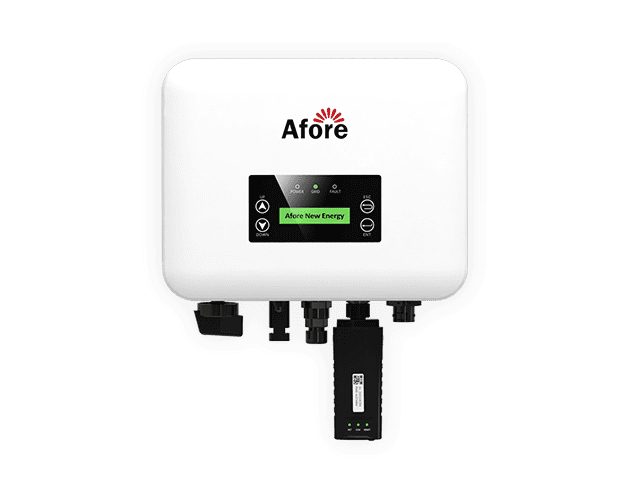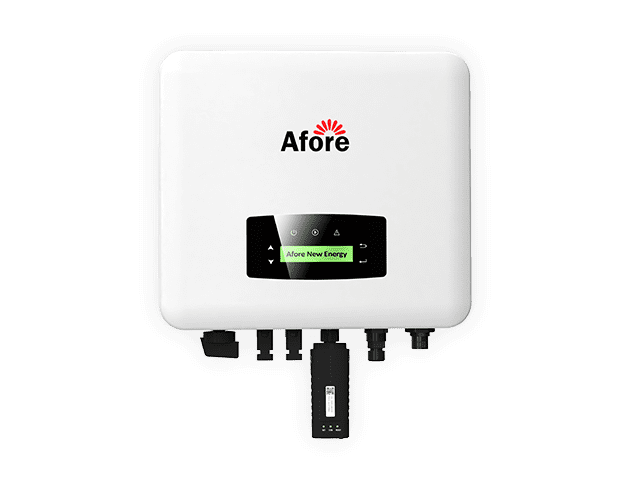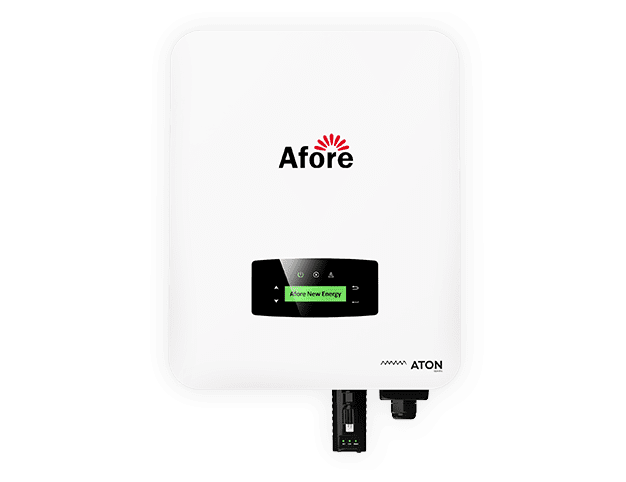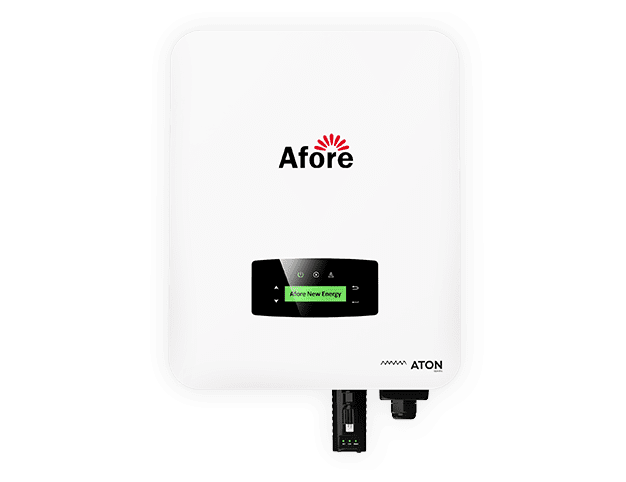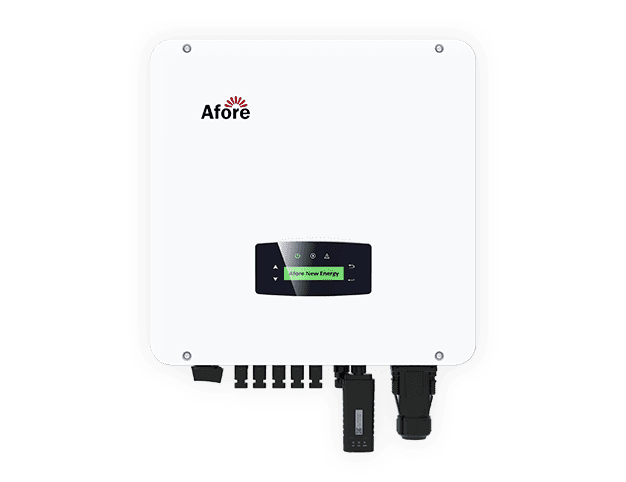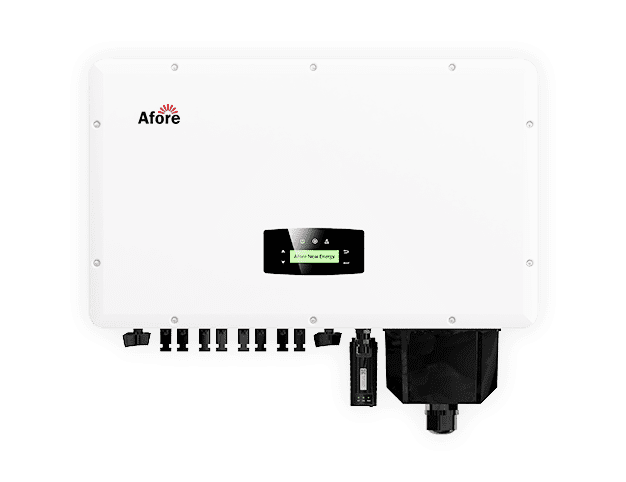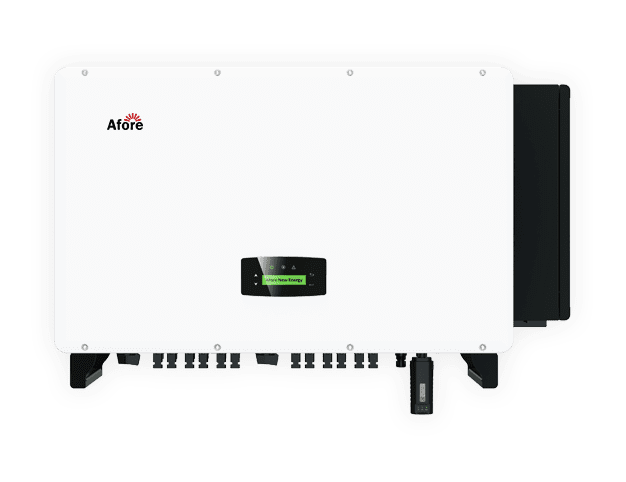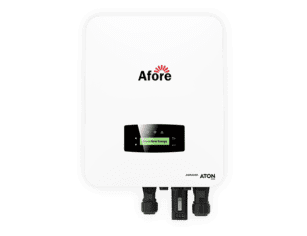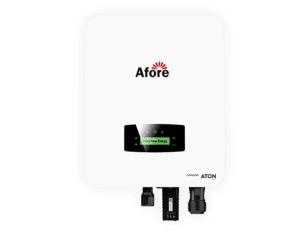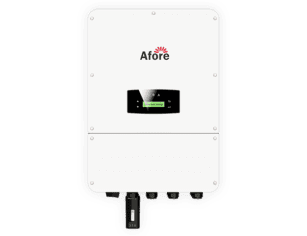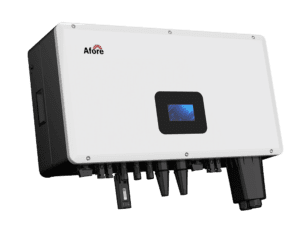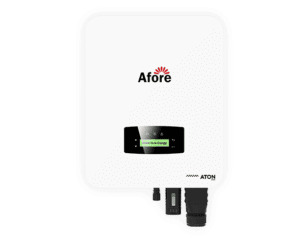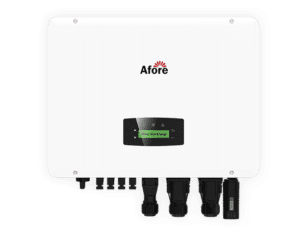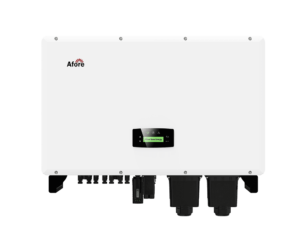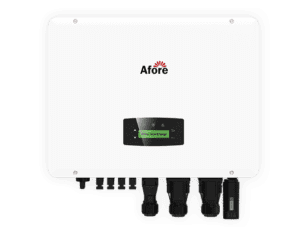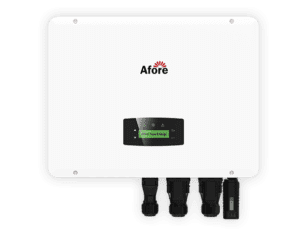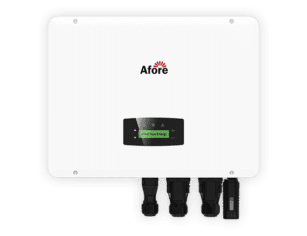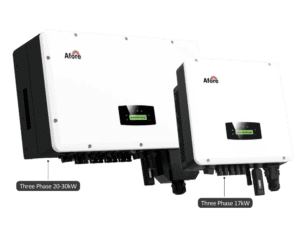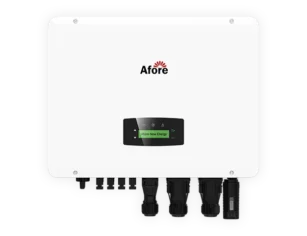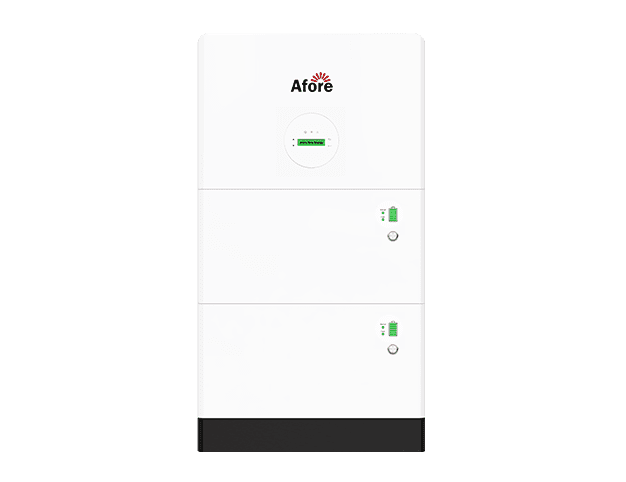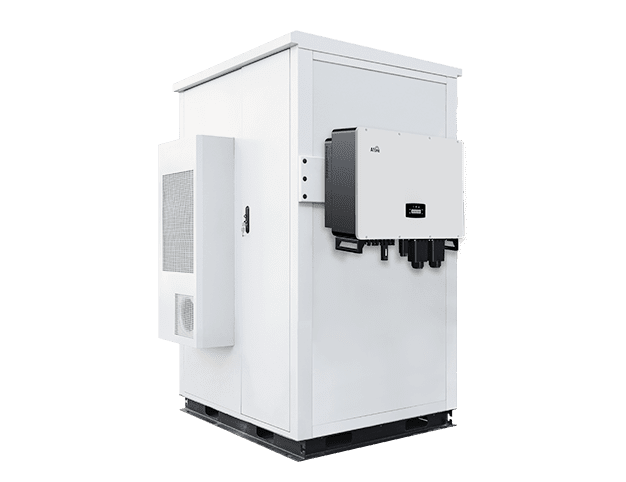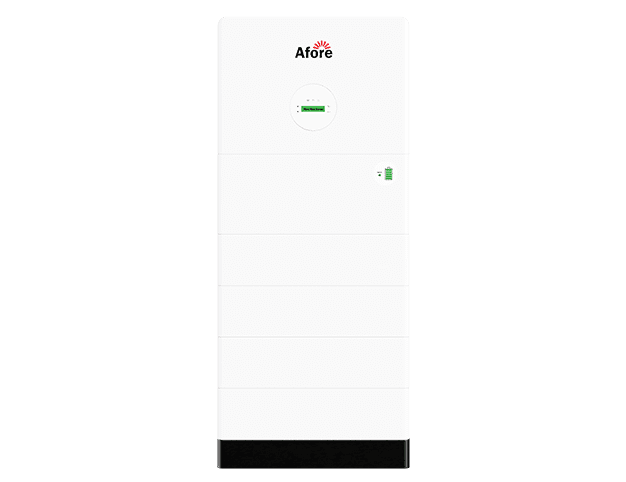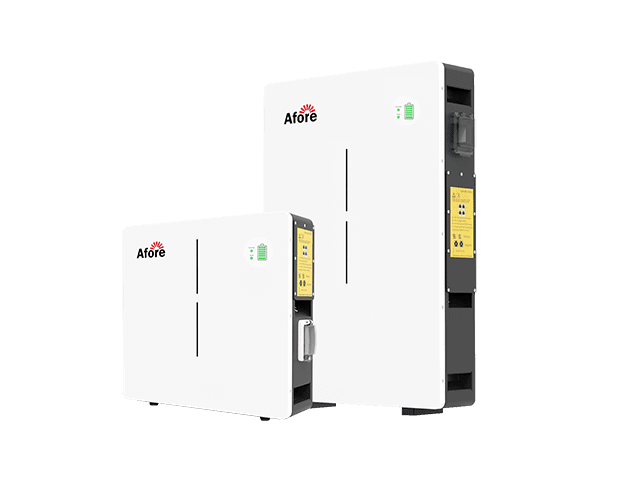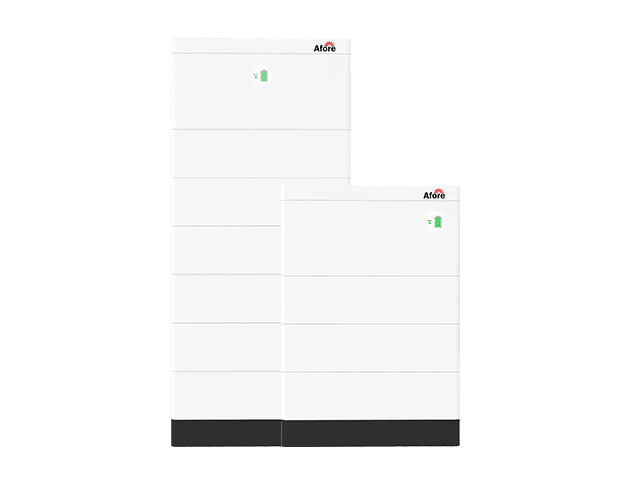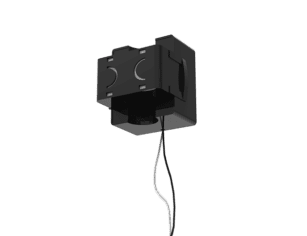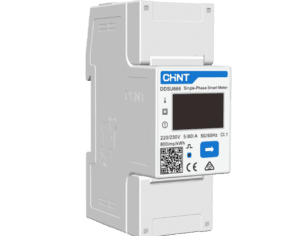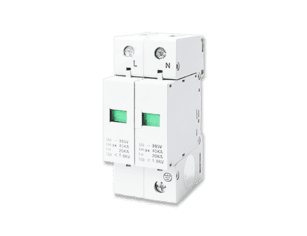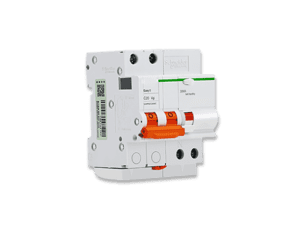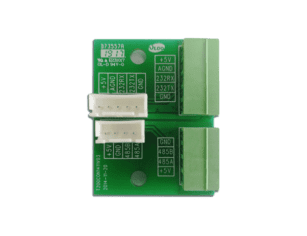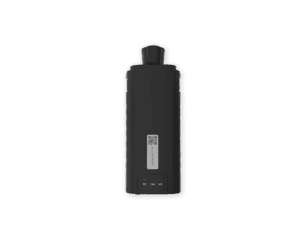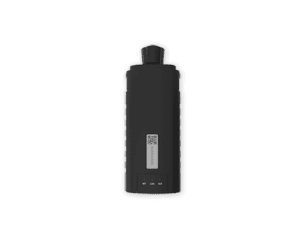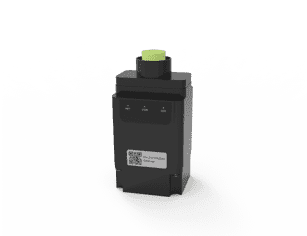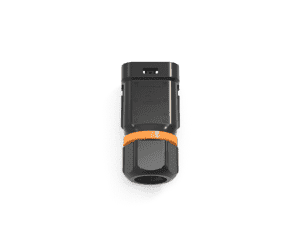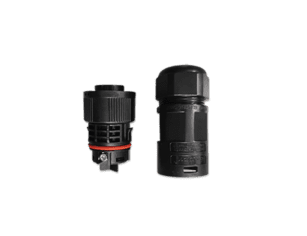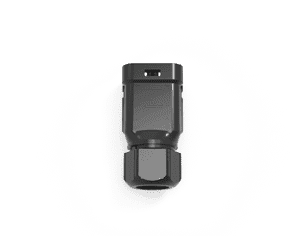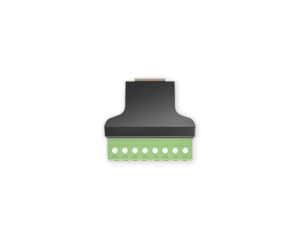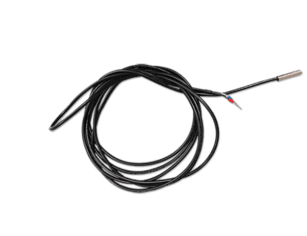Zrozumienie falownika 10000 W – moc, wydajność i stosunek kilowatów do kVA
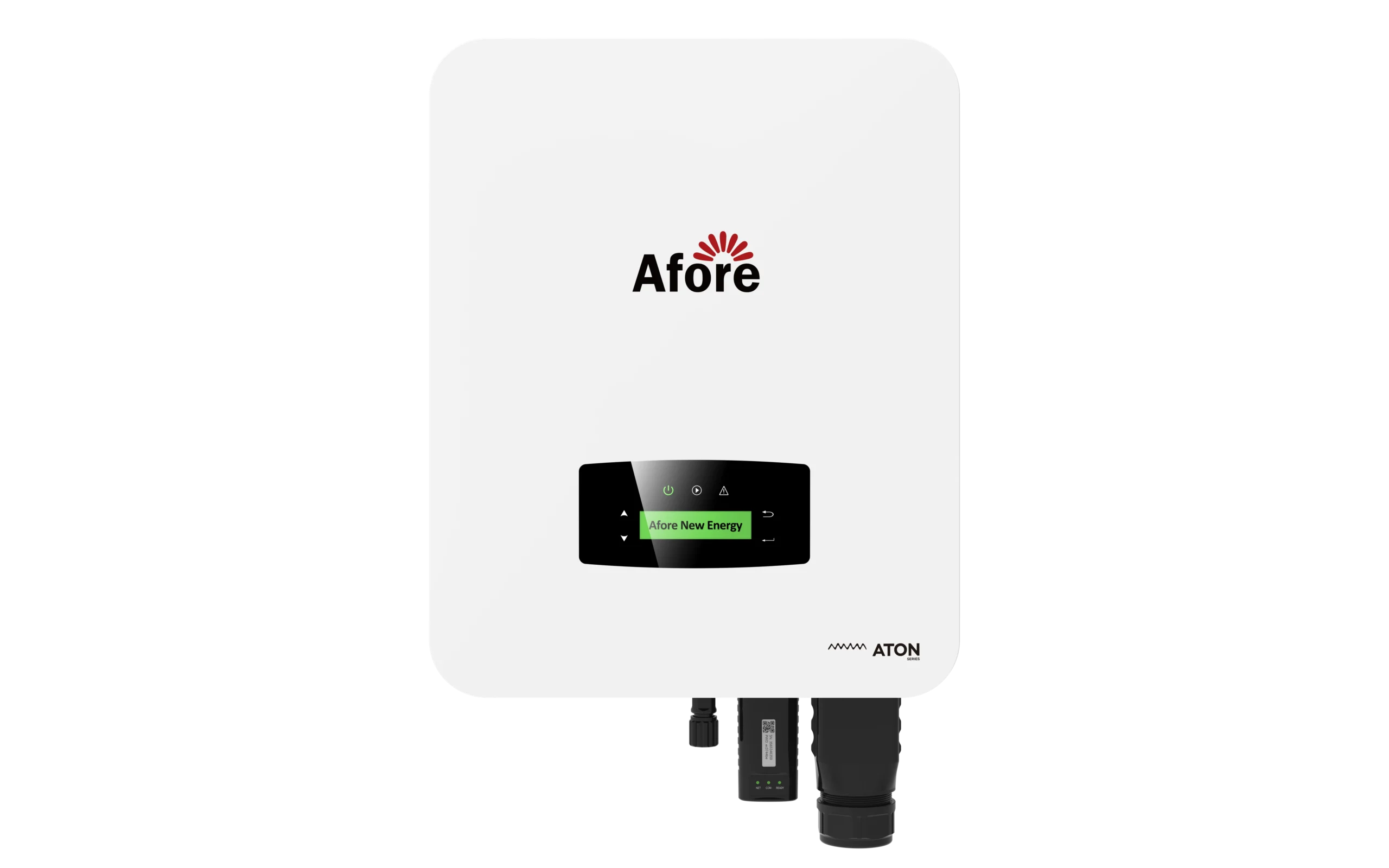
Spis treści
Jeśli chodzi o znalezienie sposobów na uzyskanie zasilania awaryjnego, falownik o mocy 10000 W jest zdecydowanie dobrym rozwiązaniem na wszystkie okazje z doskonałą mocą! Ale czym dokładnie jest falownik 10000 W i dlaczego wciąż słyszymy o kilowatach i kVA? W tym kompleksowym przewodniku zagłębimy się w zawiłości tych mocy znamionowych, zrozumiemy ich znaczenie i pomożemy w podjęciu świadomej decyzji przy wyborze falownika do swoich potrzeb.
Co to jest falownik 10000 W?
Falownik 10000 W (czasami określany jako falownik 10 kW lub po prostu falownik 10000 W) jest zasadniczo pośrednikiem między źródłem zasilania a rzeczywistym urządzeniem, które wykorzystuje energię elektryczną. Odbiera on prąd stały (taki jak dostarczany przez baterie lub panele słoneczne) i przekształca go w prąd zmienny, którego potrzebuje większość urządzeń gospodarstwa domowego. Całkiem proste, prawda? Ale oto kilka szczegółów technicznych: ważne jest, aby zrozumieć różnicę między kilowatami a kVA, zwłaszcza gdy próbujesz określić, ile mocy falownik może faktycznie obsłużyć w codziennym użytkowaniu.
Co oznacza „10000W falownik” lub „falownik 10 kW”?
Oba te terminy oznaczają w zasadzie to samo – mocny falownik, który może stale generować 10 000 watów lub 10 kilowatów. To wystarczająca moc do zasilania wielu średnich i dużych urządzeń bez wysiłku. Ale jest jedna rzecz: znajomość różnicy między kilowatami a kVA może naprawdę przydać się podczas doboru konfiguracji. Rzeczywista moc wyjściowa może się zmieniać w zależności od tak zwanego współczynnika mocy, co może mieć duży wpływ na rzeczywistą wydajność.
Typowe przypadki użycia
Falownik o mocy 10000 W jest bardzo przydatny w różnych sytuacjach. Może zasilać cały dom podczas przerwy w dostawie prądu. Może również obsługiwać wiele urządzeń w kamperze w tym samym czasie lub utrzymywać działanie małej firmy, gdy sieć ulegnie awarii. Ci entuzjaści energii słonecznej, którzy chcą niezawodnego urządzenia o dużej wydajności, powinni go wybrać.

AC vs DC – jak falowniki konwertują energię
Krótki podział techniczny
DC, czyli prąd stały, płynie w jednym kierunku i jest zazwyczaj formą energii elektrycznej przechowywanej w akumulatorach lub generowanej przez panele słoneczne. Prąd przemienny (AC) okresowo zmienia kierunek i jest formą energii elektrycznej dostarczanej do domu przez sieć energetyczną. Ponieważ większość urządzeń gospodarstwa domowego wymaga do działania prądu przemiennego, falowniki odgrywają kluczową rolę w przekształcaniu energii elektrycznej ze źródła poza siecią (takiego jak panele słoneczne lub baterie akumulatorów) w użyteczny format.
Jak dokładnie to wszystko działa? Wewnątrz falownika znajduje się cały zestaw podzespołów elektronicznych, które pracują w tandemie, aby regulować prąd we właściwy sposób. Zasadniczo chodzi o mieszankę tranzystorów mocy i kontrolerów, które włączają i wyłączają prąd stały bardzo szybko – trochę jak błyskawiczne przełączanie włącznika światła – aby naśladować płynny, falowy przepływ prądu przemiennego. Bardziej zaawansowane falowniki podnoszą poprzeczkę dzięki inteligentnym algorytmom i filtrom, które oczyszczają sygnał, dając super stabilną falę sinusoidalną, która jest prawie taka sama jak energia elektryczna z lokalnego zakładu energetycznego.
Wydajność i jakość kształtu fali
Nie wszystkie falowniki są sobie równe. Dobry inwerter solarny nie tylko przekształca energię elektryczną z jednej postaci w drugą. Chodzi o to, aby robić to dobrze – wydajnie i z czystym, stabilnym wyjściem. W tym miejscu zaczyna mieć znaczenie cały „kształt fali”. Falowniki najwyższej klasy? Zapewniają czystą falę sinusoidalną, czyli dokładnie to, co uwielbia wrażliwa elektronika, silniki i urządzenia. Jest ona bardzo płynna, podobnie jak w przypadku zasilania z sieci elektrycznej, dzięki czemu urządzenie działa cicho, niezawodnie i bez żadnych dziwnych zakłóceń lub długotrwałych uszkodzeń.
Obecnie, zmodyfikowane falowniki sinusoidalne są rodzajem opcji budżetowej. Rzeczywiście, są one tańsze, ale generowana przez nie moc nie jest tak płynna. Jest nieco niestabilna i może powodować zakłócenia w działaniu niektórych urządzeń, takich jak systemy dźwiękowe, drukarki laserowe lub nowe lodówki z wyższej półki. Niektóre rzeczy mogą brzęczeć, zachowywać się dziwnie lub po prostu nie działać prawidłowo. Z czasem ta nierówna moc może sprawić, że urządzenia będą mniej wydajne, a nawet szybciej się zużyją. Tak więc, jeśli zainwestowałeś w falownik 10000 W i naprawdę zależy Ci na uzyskaniu stałej, niezawodnej wydajności, to użycie falownika sinusoidalnego jest zdecydowanie mądrzejszym wyborem.
Nie należy też zapominać o sprawności. Dobre inwertery zwykle osiągają ponad 95%, co oznacza, że prawie cała moc jest przesyłana bez strat. To bardzo ważne, jeśli korzystasz z energii słonecznej, gdzie liczy się każdy kawałek energii. Wiele nowszych modeli jest nawet wyposażonych we wbudowany monitoring, dzięki czemu można śledzić działanie systemu w czasie rzeczywistym.
Kto potrzebuje falownika o mocy 10 kW?
Inwerter o mocy 10 kW jest całkiem potężny i może przydać się w wielu sytuacjach. Oto kilka sposobów, w jakie może on naprawdę zrobić różnicę:
- Domowe zasilanie awaryjne: idealne do zapewnienia nieprzerwanego zasilania podczas awarii.
- Kampery i przyczepy kempingowe: Zapewnia niezawodne zasilanie dla podróżujących.
- Małe firmy: Utrzymuje działanie niezbędnego sprzętu podczas przerw w dostawie prądu.

Kilowaty a kVA: Jaka jest różnica?
Co to jest kilowat (kW)?
Kilowaty (kW) oznaczają moc efektywną, czyli ilość energii faktycznie dostępnej do pracy. Ta energia elektryczna zasila urządzenia, oświetla pomieszczenia i uruchamia klimatyzator. To właśnie za nią firma energetyczna pobiera opłaty i ma ona bezpośredni wpływ na wysokość rachunków za energię elektryczną.
Jeśli urządzenie o mocy 1000 W będzie pracować przez godzinę, zużyje 1 kilowatogodzinę (kWh) energii. Dlatego przy ocenie falownika (np. falownika o mocy 10000 W) wartość znamionowa kW odzwierciedla rzeczywistą dostępną moc. Liczba ta ma kluczowe znaczenie dla efektywności energetycznej i rzeczywistej mocy wyjściowej.
Co to jest kVA?
Skrót kVA oznacza kilowoltoamper i jest sposobem pomiaru tak zwanej „mocy pozornej”. Oznacza to, że zawiera nie tylko część energii elektrycznej, która faktycznie wykonuje pracę, tj. moc czynną, ale także część, która pomaga utrzymać pola elektryczne i magnetyczne urządzeń takich jak silniki i transformatory, tj. moc bierną. Chociaż moc bierna w rzeczywistości nie wykonuje żadnej użytecznej pracy, nadal jest niezbędna do prawidłowego funkcjonowania niektórych urządzeń.
Współczynnik mocy to współczynnik, który wskazuje, jak skutecznie energia elektryczna jest przekształcana w użyteczną pracę. Waha się on od 0 do 1. Współczynnik mocy równy 1 oznacza, że cała moc jest efektywnie wykorzystywana (kW = kVA), ale większość rzeczywistych systemów działa ze współczynnikiem mocy między 0,8 a 0,95.

Wzór konwersji kW na kVA
kW = kVA × współczynnik mocy Załóżmy, że masz falownik o mocy 10000 W, a współczynnik mocy systemu wynosi 0,9: kVA = 10000 W / 0,9 ≈ 11,1 kVA
Oznacza to, że inwerter musi być w stanie obsłużyć około 11,1 kVA, aby dostarczyć 10 kW rzeczywistej mocy w tym scenariuszu.
Dlaczego wybór falownika lub generatora ma znaczenie?
Znajomość różnicy między kilowatami i kilowoltami oraz współczynnika mocy systemu może zaoszczędzić wielu kłopotów. Jeśli wybierzesz falownik tylko na podstawie wartości znamionowej kVA, nie myśląc o współczynniku mocy, możesz skończyć z urządzeniami, które nie działają prawidłowo lub, co gorsza, z falownikiem, który jest stale przeciążony. Jest to doskonały przykład tego, jak ignorowanie zależności między kilowatami a kVA może prowadzić do nieefektywnego systemu.
Weźmy to jako przykład: załóżmy, że masz falownik o mocy 10000 W obsługujący małą firmę z wieloma silnikami lub ciężkim sprzętem. Tego rodzaju maszyny mają zwykle niższy współczynnik mocy, co oznacza, że naprawdę trzeba uwzględnić moc pozorną – lub kVA – przy doborze falownika. W przeciwnym razie można narazić się na problemy z wydajnością.

Ile może działać falownik o mocy 10000 W?
Zasilanie urządzeń gospodarstwa domowego
Falownik o mocy 10000 W ułatwia zasilanie różnych urządzeń i sprzętów gospodarstwa domowego. Jest to szczególnie ważne, gdy zużycie energii jest rozłożone w czasie lub inteligentnie zarządzane. Jako przykład:
- 2 lodówki (300 W każda)
- 1 klimatyzator (1500 W)
- 1 pralka (1000W)
- 1 kuchenka mikrofalowa (1000 W)
- Oświetlenie (500W)
- Telewizor, laptopy, routery, wentylatory i ładowanie urządzeń mobilnych (1000 W) Łącznie: ~6600 W w typowych warunkach
Daje to około 3400 W dodatkowej mocy do wykorzystania. Oznacza to, że możesz również obsługiwać zmywarkę, odkurzacz, a nawet mały podgrzewacz wody – tylko nie wszystko w tym samym czasie.
Backup całego domu: Czy 10 kW wystarczy?
W przypadku większości przeciętnych gospodarstw domowych tak – falownik o mocy 10 kW jest w stanie zaspokoić codzienne zapotrzebowanie na energię przy odrobinie planowania. Kluczem jest zrozumienie różnicy między obciążeniami szczytowymi (wszystkie urządzenia działające w tym samym czasie) a obciążeniami ciągłymi (urządzenia, które są zwykle włączone). Na przykład, klimatyzator, lodówka i pralka mają dość wysoką moc, ale zwykle nie pracują z pełną prędkością przez wiele godzin w tym samym czasie.
Aby uniknąć kłopotów związanych ze spadkami napięcia lub przeciążeniami systemu, naprawdę mądrze jest podjąć pewne środki zarządzania energią. Mali pomocnicy, tacy jak inteligentne kontrolery obciążenia lub wyspecjalizowane pod-panele, mogą upewnić się, że w przypadku awarii zasilania najważniejsze urządzenia w domu nadal będą zasilane w pierwszej kolejności. Nie należy również zapominać, że silniki, takie jak pompy i klimatyzatory, mogą uruchamiać się z dużą mocą, dwa do trzech razy większą niż ich normalna moc. Musimy wziąć pod uwagę tę sytuację podczas wymiarowania systemu.
Przykład działania: Można uruchomić:
- Światła i wentylatory w 3 pokojach
- Średniej wielkości lodówka
- Falownik AC o mocy 1,5 tony
- Kuchenka mikrofalowa
- Pralka
- System rozrywki Wszystko wygodnie w zakresie 10 000 W – pod warunkiem, że nie włączasz wszystkiego naraz.
Niezależnie od tego, czy konfigurujesz energię słoneczną, czy zasilanie awaryjne, falownik 10000 W zapewnia elastyczność. Aby jednak w pełni go wykorzystać, należy go sparować z odpowiednimi bateriami, panelami słonecznymi i inteligentnym planem zużycia energii.
Obliczanie zapotrzebowania na panele słoneczne i akumulatory dla falownika 10 kW
Ile akumulatorów w hybrydowym systemie z falownikiem o mocy 10 kW?
Jeśli każda bateria zapewnia 5 kWh i wymagane jest podtrzymanie przez 6 godzin: 10kW × 6h = 60kWh potrzebne 60kWh / 5kWh = 12 baterii
Ile paneli słonecznych zasila falownik o mocy 10 kVA?
Zakładając panele o mocy 400 W i 6 godzin nasłonecznienia dziennie: 10 000W / 400W = 25 paneli

Wybór dobrego falownika solarnego
Decyzja o zakupie falownika o mocy 10000 W to dobry wybór! Nie wszystkie falowniki są sobie równe, a wybór dobrego falownika solarnego może zdecydować o powodzeniu lub porażce całego systemu. Możesz porównywać różne marki lub decydować, czy chcesz mieć sieć hybrydową, czy poza siecią. Tak czy inaczej, porównanie kilowatów i kva daje pełniejszy obraz tego, jak system będzie działał w rzeczywistym świecie.
Co składa się na „dobry falownik solarny”?
Podzielmy to na przyjemne rzeczy do zrobienia:
- Wysoka sprawność (95% lub więcej): Dobry falownik solarny powinien przekształcać jak najwięcej energii słonecznej w użyteczną energię prądu przemiennego. Wszystko poniżej 90% jest obecnie czerwoną flagą.
- MPPT (śledzenie maksymalnego punktu mocy): To ważne. MPPT pomaga w pełni wykorzystać każdą kroplę energii z panelu słonecznego i dynamicznie dostosowuje się do zmieniających się warunków oświetleniowych. Jest to niezbędne do maksymalizacji wydajności paneli słonecznych.
- Możliwości hybrydowe: Planujesz łączyć panele słoneczne, zasilanie sieciowe i akumulatory? Falownik hybrydowy zapewnia taką elastyczność. Może on z łatwością przełączać się między różnymi źródłami zasilania i jest po prostu idealnym partnerem zarówno dla aplikacji on-grid, jak i off-grid!
- Inteligentne monitorowanie: Najlepsze falowniki solarne są teraz wyposażone we wbudowane Wi-Fi, aplikacje lub pulpity nawigacyjne online. Możesz śledzić, ile energii generujesz, zużywasz i przechowujesz – bezpośrednio z telefonu.
- Solidna jakość wykonania: Solidny falownik powinien być w stanie poradzić sobie z ciepłem, kurzem i sporadycznymi skokami napięcia bez żadnych problemów. Jeśli planujesz zainstalować go na zewnątrz, upewnij się, że wybierzesz taki z dobrym systemem chłodzenia i obudową odporną na warunki atmosferyczne – to pomoże mu przetrwać znacznie dłużej.
- Gwarancja i wsparcie: Zawsze sprawdzaj gwarancję – od 5 do 10 lat to standard. Weź również pod uwagę dostępność wsparcia. Marka może mieć świetne specyfikacje, ale jeśli obsługa klienta jest koszmarem, czeka Cię ciężka przeprawa.
Popularne marki: Afore
Jeśli szukasz marki, która równoważy wydajność z ceną, Przed jest warta sprawdzenia. Ich inwertery posiadają inteligentne funkcje, są bardzo wydajne i wyposażone w przyjazne dla użytkownika aplikacje. Ponadto są one znane ze swojej wytrzymałości i łatwości instalacji. Bez względu na to, czy chcesz zainstalować system solarny w swoim domu, czy też sprzedawca potrzebuje falownik hybrydowyAfore ma wszystko pod kontrolą.

Falowniki hybrydowe vs poza siecią vs podłączone do sieci
Wybierając falownik solarny, warto również zastanowić się nad tym, czy najlepiej sprawdzi się konfiguracja hybrydowa, poza siecią czy podłączona do sieci. Każda z nich ma swoje zalety i kompromisy, więc tak naprawdę wszystko sprowadza się do tego, czego potrzebujesz i jak planujesz używać swojego systemu.
Korzyści i ograniczenia
- Systemy hybrydowe: Zapewniają to, co najlepsze z obu światów, łącząc się z siecią i wykorzystując energię odnawialną. Uruchamiają się, gdy zabraknie prądu i pomagają maksymalnie wykorzystać energię, dostosowując się do warunków sieci i ilości energii słonecznej.
- Systemy poza siecią: Idealne rozwiązanie dla odległych lokalizacji lub obszarów z zawodną siecią energetyczną. Są one w pełni niezależne od sieci i opierają się wyłącznie na odnawialnych źródłach energii i przechowywaniu baterii.
- Systemy podłączone do sieci: Łączą się bezpośrednio z siecią i wykorzystują energię słoneczną do równoważenia zużycia energii. Nie zapewniają zasilania awaryjnego podczas przerw w dostawie energii, chyba że są sparowane z systemem magazynowania baterii.
Wnioski
O co więc chodzi z tym kVA? I o co chodzi z kilowatami i kVA? Mam nadzieję, że pomogło to nieco wyjaśnić. Przy zakupie falownika o mocy 10000 W ważne jest, aby określić obciążenie, aby falownik idealnie pasował do systemu. Trzeba wybrać dobrej jakości falownik solarny, który spełni Twoje potrzeby. Jeśli masz jakieś pytania, skontaktuj się z nami.
FAQ
Jaka jest różnica między falownikiem kVA a falownikiem kW?
Moc znamionowa falownika kVA jest obliczana na podstawie mocy pozornej; moc znamionowa falownika kW jest określana na podstawie mocy rzeczywistej. Moc znamionowa kW odnosi się do rzeczywistej mocy dostarczanej do obciążenia; a moc znamionowa kVA, która zawiera zarówno moc rzeczywistą, jak i moc bierną.
Ile akumulatorów potrzebuję do falownika o mocy 10000 W?
Liczba akumulatorów zależy od ich pojemności i potrzeb w zakresie magazynowania energii. Ogólnie rzecz biorąc, aby zapewnić wystarczającą moc rezerwową dla falownika 10000 W, należy użyć kilku akumulatorów o głębokim cyklu.
Czy falownik o mocy 10 kW może zasilać cały dom?
Zdolność falownika o mocy 10 kW do zaspokojenia zapotrzebowania na energię elektryczną całego domu zależy od zużycia energii. W przypadku małych domów, które nie wymagają zbyt wiele energii, powinno to być więcej niż wystarczające. Jeśli jednak mieszkasz w dużym domu lub domu, który zużywa dużo energii elektrycznej, może to nie wystarczyć.
Jakie urządzenia może obsługiwać falownik o mocy 10 kW?
Falownik o mocy 10 kW może obsługiwać wszelkiego rodzaju urządzenia, takie jak klimatyzatory, lodówki, telewizory i oświetlenie. To powiedziawszy, liczba urządzeń, które można uruchomić jednocześnie, zależy od tego, ile energii zużywa każde z nich i jak wydajny jest falownik.
Czy falownik 10 kW nadaje się do instalacji solarnych?
Tak, falownik o mocy 10 kW doskonale nadaje się do instalacji solarnych. Można go podłączyć do paneli słonecznych i akumulatorów, aby zapewnić niezawodne zasilanie awaryjne i obniżyć rachunki za energię elektryczną.
Czy falownik 10000 W może zasilać klimatyzator?
Tak, falownik o mocy 10000 W może zasilać klimatyzator, w zależności od jego poboru mocy. Większość centralnych klimatyzatorów zużywa około 1-3 kW, więc falownik o mocy 10 kW powinien sobie z tym poradzić.
Ile paneli słonecznych jest potrzebnych dla falownika 10 kVA?
Liczba wymaganych paneli słonecznych zależy od ich mocy i zużycia energii. Zazwyczaj do zasilania falownika o mocy 10 kVA potrzeba około 20-30 paneli słonecznych, ale może się to różnić w zależności od lokalizacji i dostępności światła słonecznego.
Co jest lepsze: większy falownik czy więcej baterii?
Odpowiedź zależy od konkretnych potrzeb. Większy falownik może zapewnić większą moc, ale może nie być konieczny, jeśli zużycie energii jest niskie. Większa liczba baterii może zapewnić dłuższy czas podtrzymania, ale może być kosztowna i wymagać więcej miejsca. Konsultacja z profesjonalistą może pomóc w podjęciu najlepszej decyzji w danej sytuacji.
Czy przeciążenie falownika 10 kW jest bezpieczne?
Przeciążanie falownika 10 kW nie jest zalecane. Może to prowadzić do obniżenia wydajności, przegrzania, a nawet uszkodzenia falownika i podłączonych do niego urządzeń. Aby uniknąć przeciążenia, należy zawsze upewnić się, że moc znamionowa falownika odpowiada lub przekracza całkowite obciążenie.




